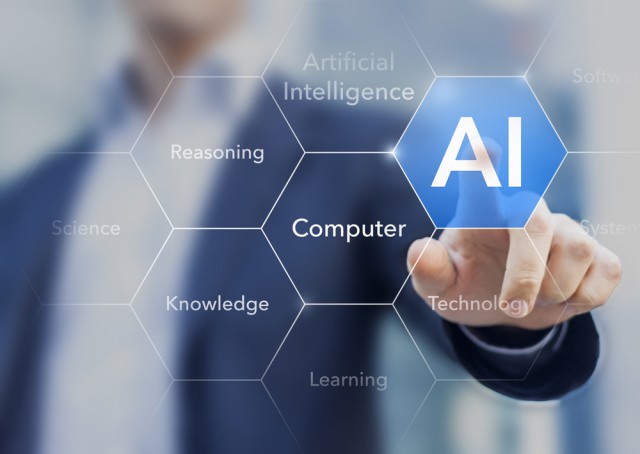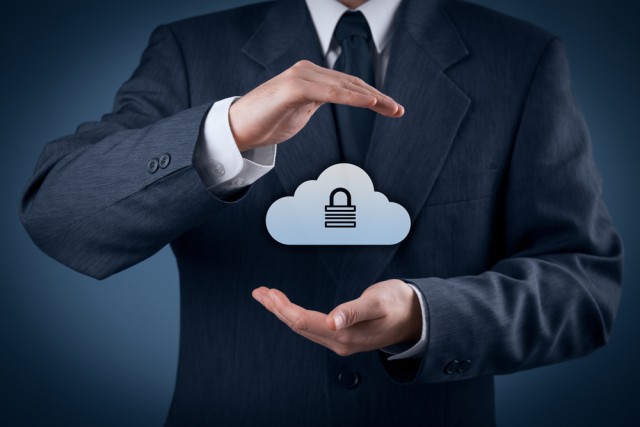
Identifying cybersecurity issues in your business
Threats to your business come in many forms. For most organizations, the biggest threats to their survival are related to cybersecurity. An Allianz survey found this to be true, as "cyber incidents" ranked as the biggest risk to organizations, overtaking "business interruption". Whether those threats are external or internal, they are continuous and evolving because of the ever-increasing shift towards digital.
Over 98 percent of UK security professionals have reported an increase in cyber-attacks against their businesses in the past year. A further 96 percent say those attacks have become more sophisticated. This shows the need for constantly-evolving UK cybersecurity.

How endpoint security and management are consolidating [Q&A]
Securing endpoints used to be a simple matter of installing a firewall and antivirus solution and then keeping them updated.
But as threats have become more sophisticated, networks more complex and working patterns have shifted away from the office, securing and managing endpoints has become a much greater problem for enterprises.

Increased expectations see burnout on the rise among enterprise tech teams
Digitization and rising consumer expectations are having a major impact on the working conditions of technology teams leading to a rise in burnout and attrition.
A new study from PagerDuty shows 42 percent working more hours in 2021 than in 2020, and 54 percent of responders are being interrupted outside normal working hours.

A third of businesses feel locked in to major cloud providers
Hyperscale cloud providers continue to dominate the market, with Azure and AWS in use as the major public cloud provider by 82 percent of businesses.
But new research from Civo shows that 34 percent of users feel locked into the services these major providers deliver, with 65 percent of these saying that data transfer costs are too expensive for them to move off their current cloud.

A third of employees don't understand the importance of cybersecurity
One in three employees doesn't understand the importance of cybersecurity at work according to new research from email security company Tessian.
In addition only 39 percent of employees say they're very likely to report a security incident, making investigation and remediation even more challenging and time-consuming for security teams. When asked why, 42 percent of employees say they wouldn't know if they had caused an incident in the first place, and 25 percent say they don't care enough about cybersecurity to mention it.

The role of IT is changing: Here's how enterprises need to adjust
The way we work has transformed. Increased digitalization, hybrid and fully remote work styles, and the integration of new and emerging technologies are all individual challenges in themselves -- but now, organizations and business leaders are expected to adapt to these changes simultaneously or risk falling behind.
This presents many issues for IT departments. The normalization of remote and hybrid teams and competitive industry pressures are major contributing factors to the increasingly prominent role IT needs to have in strategic decision-making.

Successful AI deployment needs to be enterprise wide
Businesses are keen to capitalize on AI, with 72 percent of business leaders in a new survey believing their competitors are using AI, and 63 percent concerned their competitors will use AI to gain an advantage over their own business.
But the study from SambaNova Systems, of over 2100 enterprise and IT leaders based in the US, UK, and Germany, shows just 18 percent of organizations with AI are rolling it out as a large-scale enterprise-class initiative. The majority -- 82 percent -- are rolling it out as multiple programs, creating disorganization and hindering successful deployment.

IT and security leaders lack confidence in their ability to protect the cloud
A new study from secure access specialist Appgate based on research by the Ponemon Institute finds 60 percent of IT and security leaders are not confident in their organization's ability to ensure secure cloud access.
The survey of nearly 1,500 IT decision makers and security professionals worldwide sets out to examine the pain points experienced in securing cloud environments and how zero trust security methods can enable digital transformation.

Why do we continue to rely on the 'weakest link' to protect our organizations' email?
Email security continues to be a top concern of organizations, with 94 percent of all cyber attacks being delivered through email. As the most frequently used communication channel across all industries -- no wonder threat actors love exploiting it!
The conventional approach to email security is failing. Our latest research found that an average of 75 malicious messages per 100 mailboxes slip past traditional email security filters every month. Consequently, organizations put employees through countless hours of security training with hopes they spot and report these threats to security operations centers. The so-called Human Firewall.

Biggest issue for manufacturers: Matching the selling approach to customer demands
Through every industrial revolution, from 18th-century coal and steam to today’s 21st-century digital cloud, manufacturers have adapted their operations to the modern technological standard. Today, with e-commerce rapidly transforming how consumers shop, manufacturers face an urgent need to shift their traditional sales strategy and services to meet rising expectations for a seamless buying experience -- especially for complex enterprise products.
Sales teams have addressed this pressure for the past decade with popular configure price quote (CPQ) platforms. However, the more options and buying channels customers seek and companies' products fulfill, the more burdens CPQ software faces in connecting these complex buying cycles. To improve time to market, sell solutions more effectively and gain competitive advantages through customized selling experiences, a significant upgrade in CPQ technology is needed to mesh businesses' and customers’ multiple needs.
Standards change

Lack of automation costs enterprises millions
A lack of automation capabilities for managing IT performance costs an average of $46 million a year according to a new study. While 57 percent of organizations see automation as the key enabler for closing the modernization skills gap in managing IT Operations.
The report from research firm Digital Enterprise Journal also reveals a 54 percent increase in cost of one hour of IT service down time since 2019. In addition 68 percent of IT teams' time is spent on tasks that do not contribute to key business outcomes.

Update seems to be the hardest word as enterprises struggle to maintain endpoints
The average enterprise now manages approximately 135,000 endpoint devices. But in spite of large budgets spent on endpoint protection, an average of 48 percent of devices -- or 64,800 per enterprise -- are at risk because they are no longer detected by the organization's IT department or because operating systems have become outdated.
A new study conducted by the Ponemon Institute for Adaptiva also finds 63 percent of respondents find that the lack of visibility into endpoints is the most significant barrier to achieving a strong security posture.

Size matters -- small cybersecurity teams face greater risk of attack
Companies with small security teams continue to face a number of unique challenges that place these organizations at greater risk than larger enterprises, according to a new study.
Research from Cynet, based on responses from 200 CISOs at small and medium businesses, finds 58 percent feel their risk of attack is higher compared to enterprises, despite the fact that enterprises are a bigger target.

Microsoft launches Windows Autopatch for Windows 10 and Windows 11
Having previously released a public preview earlier this year, Microsoft has announced the general availability of Windows Autopatch. Aimed at enterprise users of Windows 10 and Windows 11, the service helps to automate the process of keeping critical software updated.
In addition to Windows itself, Windows Autopatch will also keep Microsoft Edge and Office software up to date, helping to eliminate -- or at least reduce -- the risk of bugs and security issues. As well as ensuring all of the latest patches and updates are installed, the service simplifies the process of rolling back changes should a problematic update be rolled out.

How no-code platforms are helping meet enterprise business challenges [Q&A]
According to a November Wall Street Journal article, Gartner predicts global revenue in the low-code application platforms market will exceed $14 billion by 2025. Also, in a Forrester Research poll earlier this year of over 1,800 corporate tech officials at global companies, roughly 37 percent say they currently use low-code, no-code or digital process automation tools.
No-code is undoubtedly having its time in the sun and looks to be here for the long term. We recently caught up with Vinod Kachroo, CEO of no-code technology platform Innoveo, to learn more about what's driving the demand for no-code and what kind of ROI companies can realistically anticipate from it.
